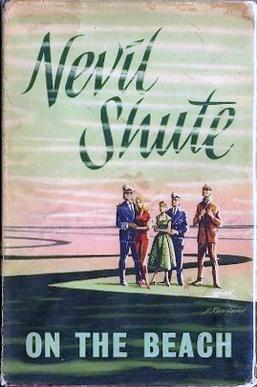
On the Beach is an apocalyptic novel published in 1957, written by British author Nevil Shute after he emigrated to Australia. The novel details the experiences of a mixed group of people in Melbourne as they await the arrival of deadly radiation spreading towards them from the Northern Hemisphere, following a nuclear war some years previous. As the radiation approaches, each person deals with impending death differently.

Barbara Gowdy, CM is a Canadian novelist and short story writer. Born in Windsor, Ontario, she is the long-time partner of poet Christopher Dewdney and resides in Toronto.
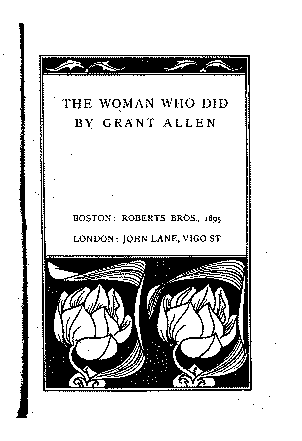
The Woman Who Did (1895) is a novel by Grant Allen about a young, self-assured middle-class woman who defies convention as a matter of principle and who is fully prepared to suffer the consequences of her actions. It was first published in London by John Lane in a series intended to promote the ideal of the "New Woman". It was adapted into a British silent film in 1915, The Woman Who Did, which was directed by Walter West, and later into a 1925 German film, Die Frau mit dem schlechten Ruf.
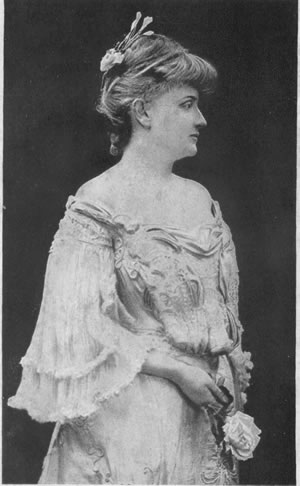
Gertrude Franklin Horn Atherton was an American writer. Many of her novels are set in her home state of California. Her bestselling novel Black Oxen (1923) was made into a silent movie of the same name. In addition to novels, she wrote short stories, essays, and articles for magazines and newspapers on such issues as feminism, politics, and war.

Destination Unknown is a work of spy fiction by Agatha Christie and first published in the UK by the Collins Crime Club on 1 November 1954 and in US by Dodd, Mead and Company in 1955 under the title of So Many Steps to Death. The UK edition retailed at ten shillings and sixpence (10/6) and the US edition at $2.75.

His Family is a novel by Ernest Poole published in 1917 about the life of a New York widower and his three daughters in the 1910s. It received the first Pulitzer Prize for the Novel in 1918.

The Watsons is an abandoned novel by Jane Austen, probably begun about 1803. There have been a number of arguments advanced as to why she did not complete it, and other authors have since attempted the task. A continuation by Austen's niece was published in 1850. The manuscript fragment itself was published in 1871. Further completions and adaptations of the story have continued to the present day.

Ann Weldy, better known by her pen name Ann Bannon, is an American author who, from 1957 to 1962, wrote six lesbian pulp fiction novels known as The Beebo Brinker Chronicles. The books' enduring popularity and impact on lesbian identity has earned her the title "Queen of Lesbian Pulp Fiction". Bannon was a young housewife trying to address her own issues of sexuality when she was inspired to write her first novel. Her subsequent books featured four characters who reappeared throughout the series, including her eponymous heroine, Beebo Brinker, who came to embody the archetype of a butch lesbian. The majority of her characters mirrored people she knew, but their stories reflected a life she did not feel she was able to live. Despite her traditional upbringing and role in married life, her novels defied conventions for romance stories and depictions of lesbians by addressing complex homosexual relationships.
Katherine V. Forrest is a Canadian-born American writer, best known for her novels about lesbian police detective Kate Delafield. Her books have won and been finalists for Lambda Literary Award twelve times, as well as other awards. She has been referred to by some "a founding mother of lesbian fiction writing."
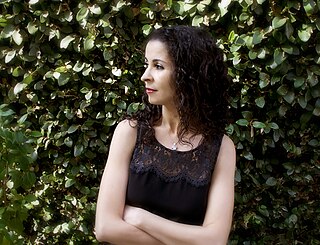
Laila Lalami is a Moroccan-American novelist, essayist, and professor. After earning her licence ès lettres degree in Morocco, she received a fellowship to study in the United Kingdom (UK), where she earned an MA in linguistics.
Diana Pharaoh Francis is an American fantasy author and professor, best known for her novels Path of Fate and The Cipher.

Lisa See is an American writer and novelist. Her books include On Gold Mountain: The One-Hundred-Year Odyssey of My Chinese-American Family (1995), a detailed account of See's family history, and the novels Flower Net (1997), The Interior (1999), Dragon Bones (2003), Snow Flower and the Secret Fan (2005), Peony in Love (2007) and Shanghai Girls (2009), which made it to the 2010 New York Times bestseller list. Both Shanghai Girls and Snow Flower and the Secret Fan received honorable mentions from the Asian/Pacific American Awards for Literature.

Gabrielle Zevin is an American author and screenwriter.

Divisadero is a novel by Michael Ondaatje, first published on April 17, 2007 by McClelland and Stewart.
Young Royals is a series of novels for children by Carolyn Meyer based on the early lives of multiple royalties such as English and French royalty. Books in the series are mostly about the English Tudors, such as: Mary, Bloody Mary (1999); Beware, Princess Elizabeth (2001); Doomed Queen Anne (2002); and Patience, Princess Catherine (2004). The French books in the series are Duchessina (2007), about the life of Catherine de' Medici, and The Bad Queen: Rules and Instructions for Marie-Antoinette (2010). The most recent titles in the series are: The Wild Queen: The Days and Nights of Mary, Queen of Scots (2012); Victoria Rebels (2013), about Queen Victoria of the British Empire; and Anastasia and Her Sisters (2013), about the daughters of Tsar Nicholas of Russia, specifically Anastasia.

The Brief Wondrous Life of Oscar Wao is a 2007 novel written by Dominican American author Junot Díaz. Although a work of fiction, the novel is set in New Jersey in the United States, where Díaz was raised, and it deals with the Dominican Republic's experience under dictator Rafael Trujillo. The book chronicles the life of Oscar de León, an overweight Dominican boy growing up in Paterson, New Jersey, who is obsessed with science fiction and fantasy novels and with falling in love, as well as a curse that has plagued his family for generations.
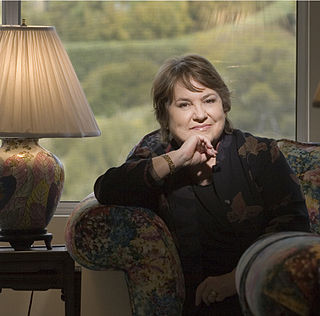
Carolyn See was a professor emerita of English at the University of California, Los Angeles, and the author of ten books, including the memoir, Dreaming: Hard Luck and Good Times in America, an advice book on writing, Making a Literary Life, and the novels There Will Never Be Another You, Golden Days, and The Handyman. See was also a book critic for The Washington Post for 27 years.
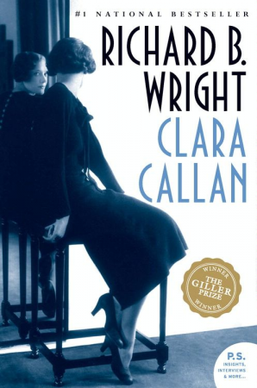
Clara Callan is a novel by Canadian writer Richard B. Wright, published in 2001. It is the story of a woman in her thirties living in Ontario during the 1930s and is written in epistolary form, utilizing letters and journal entries to tell the story. The protagonist, Clara, faces the struggles of being a single woman in a rural community in the early 20th century. The novel won the Governor General's Award in the English fiction category, the Scotiabank Giller Prize, and the Trillium Book Award.

Sarah Harriet Burney was an English novelist. She was the daughter of the musicologist and composer Charles Burney and half-sister of the novelist and diarist Frances Burney. She had some intermittent success with her novels.

Tomorrow, and Tomorrow, and Tomorrow is a 2022 novel by Gabrielle Zevin. The novel follows the relationship between three friends who begin a successful video game company together. It is Zevin's fifth novel for adults and tenth novel overall.

















